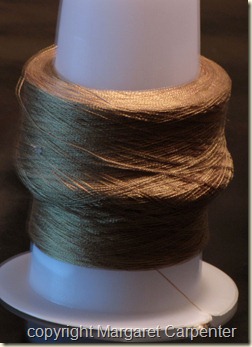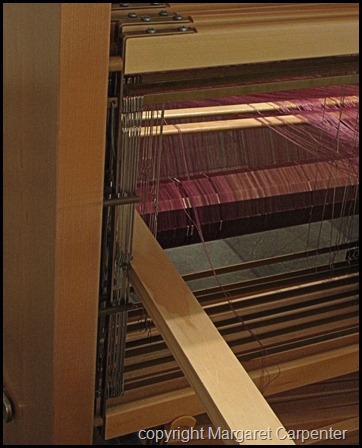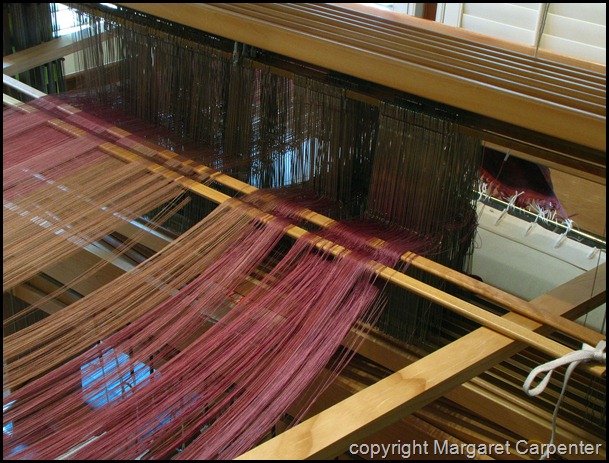Posted by Peg in South Carolina
Well, it’s not the cone that is crooked; it’s the winding.
When I got to this point, I could no longer turn the handle. Something was jammed. I am not a mechanic. Still, I took the cone off the winder, turned the winder upside down in my hand. I looked through the tiny opening and it seemed to unmechanical Peg that there were bits of threads caught in the gear mechanism. What to do?
Could I take it apart to get at the gears? I saw 4 screws on the bottom. I removed them and proceeded to pull the bottom of the winder away from the top. But it wouldn’t come apart. Was there something else I could do?
I’d had this (relatively) inexpensive winder for close to 10 years. I knew I wouldn’t feel badly about buying a new one. But I was still determined to try to get it back into working order.
I could not find another way to separate them into the two pieces. But, there was enough of an opening that I could clearly see the threads caught in the gears, but not enough of an opening for even one finger to slip through.
I tried a long beading tweezers, but even that was too wide. So I took a crochet hook and poked around until a thread came to where I could grab it either with my fingers or tweezers. Then I pulled it out of the gear. I did this any number of times, pulling out not only threads but bits of dust ball sort of things. Finally, the gear mechanism seemed to be clean of any garbage.
I put a fresh cone on, attached the thread, took the handle in my fingers and turned. It turned freely. It wound out correctly. I am so proud of myself!
“Crooked Cone” was written by Margaret Carpenter for Talking about Weaving and was originally posted on September 30, 2010. ©2010 Margaret Carpenter aka Peg in South Carolina




